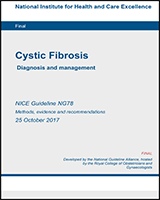Table 162Research recommendation justification
| Research question | Should all children with meconium ileus receive ursodeoxycholic acid from diagnosis? |
|---|---|
| Why this is needed | |
| Importance to ‘patients’ or the population | Liver disease is the third commonest cause of death in cystic fibrosis. Meconium ileus is a risk factor for the development of cystic fibrosis related liver disease. It is possible that ursodeoxycholic acid (UDCA) decreases the incidence or severity of cystic fibrosis related liver disease. UDCA is relatively inexpensive and well tolerated, and if it decreased the incidence or severity of cystic fibrosis related liver disease this could improve quality of life and decrease mortality. |
| Relevance to NICE guidance | If UDCA changed the incidence or severity of cystic fibrosis related liver disease, this would change the recommendations for monitoring and treatment.
|
| Relevance to the NHS | Financial cost of regular therapy and treatment burden to the patient. Cost savings if decreased incidence and severity of liver disease |
| National priorities | No document identified. |
| Current evidence base | UDCA can improve deranged biochemical tests of liver function, but it is unclear whether if given to high risk groups it is able to alter the incidence or severity of disease. |
| Equality | This intervention is of particular relevance to infants born with meconium ileus who are at increased risk of cystic fibrosis related liver disease. |
| Feasibility | The proposed research can be carried out within a realistic timescale and at an acceptable cost. There are no ethical or technical issues. |
| Other comments | None |
- Table 162, Research recommendation justification - Cystic FibrosisTable 162, Research recommendation justification - Cystic Fibrosis
- Homo sapiens SH3 and PX domains 2A (SH3PXD2A), transcript variant 1, mRNAHomo sapiens SH3 and PX domains 2A (SH3PXD2A), transcript variant 1, mRNAgi|1890261269|ref|NM_014631.3|Nucleotide
Your browsing activity is empty.
Activity recording is turned off.
See more...
